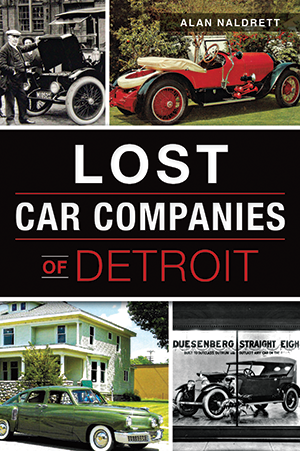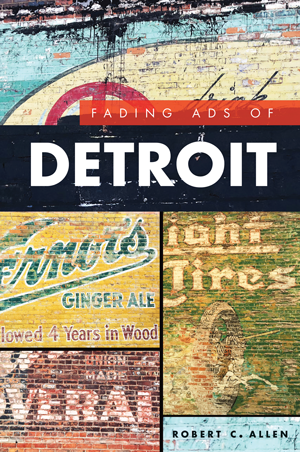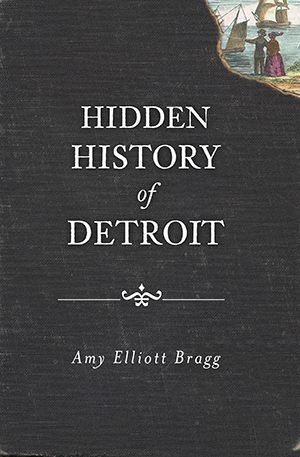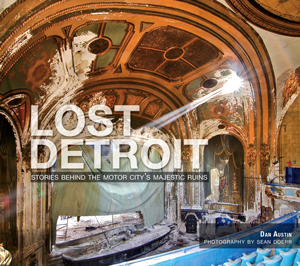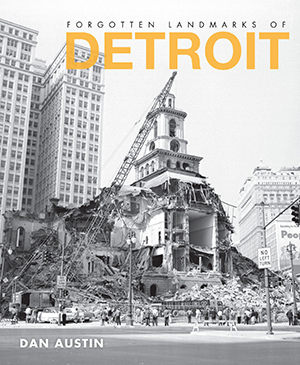
Detroit. The name alone may bring up the image of the classic American Muscle car. Designed and built in the Motor City. The car’s radio blaring the unmistakable sound of a Motown hit. For others, the name of the city may bring memories of watching a game at Tiger Stadium or seeing the Lions play on Thanksgiving Day.
From Fur Post to Fort
Founded by Antoine de la Mothe Cadillac in 1701 and named Fort Pontchartrain, its purpose was to control the rich fur trade by French Colonists. Europe looked to France for fashion influence and Fur was in. The outpost would find many changes in its early history. The fort would come under British control during the French and Indian war in 1760 and renamed Fort Detroit. Under the Treaty of Paris in 1783, which brought an end to the Revolutionary War the city passed to the Americans.
Like the Phoenix…
In 1805, Detroit would face another change. This time it would not come as a result of one flag being exchanged for another but a fire that would sweep through the city. Instead of abandoning the site of the town the people rebuilt. Detroiters modeled their rebuilt town after the young nation’s new capital, Washington. The fire is remembered in the flag of the city which in the center features two women with a fire burning in the city behind them and around them is a Latin motto which means: “It will rise from the ashes.”

The strategic location of Detroit would bring war to the city’s doorstep during the War of 1812 when they surrendered to the British. Americans regained the city just over a year later after Commodore Perry achieved a victory on Lake Erie and General William Henry Harrison (future president) also gained a victory at Thames River.
An Industrial Boom

The city was surrounded by farmlands and became an important commercial center and served as a capital city before that honor moved to Lansing. After the Civil War, the landscape of the city began to change when industry began to move in. Through the late 1800s, the situation was set for Detroit to become the place for companies such as the big 3–Ford, General Motors, and Chrysler–to call home. But before Detroit was Motor City it was known as Thunder City as train cars loaded with ore and other goods made their way to and through the city. The trains would carry loads from Detroit all over the United States and Canada.
Detroit’s Musical Range
Music would play a role in Detroit’s history but that story goes back a little further than you may think. The Great Migration of the 1920s brought jazz to the city, specifically the big band sound. Skipping ahead to the 1950’s Detroit put its mark on the Blues scene and the gospel scene. It was the 60’s however where Motown’s distinct sound would make its way into music history. From Gospel to blues to rock Detroit has a varied musical history.
Planes, Trains, and Automobiles

Detroit’s factories have a varied history as well. Before the United States found itself in World War II Ford Motor Company had already begun production on B-24 Liberators. Ford had the ability to produce a B-24 at the rate of 1 an hour. The company would produce over 8,000 B-24’s before the war was done. Chrysler built tanks, rolling their first one off the line before the plant itself was complete. Three different companies: Willys-Overland, Ford, and Bantam made the workhorse of the army that would become known as the Jeep. And the man who led the charge, telling other Detroit Executives, “Gentlemen We must out build Hitler” was the President of General Motors, William Knudsen. Knudsen would give up his lucrative salary to work for Uncle Sam for $1.
Shaped By Change

Detroit’s influence reaches out past its city limits. Look in any parking lot to see a car designed in Detroit. You can still turn a radio dial and hear music written and recorded in Detroit. We still enjoy freedom won due to the industry and machines manufactured in Detroit. The city has played an important role in our country’s history, and while it may seem like its best days are in the past, look again at the city’s flag and read aloud the motto: “Speramus Meliora Resurget Cineribus.” It will rise from the Ashes. No doubt.
Related Book Recommendations


